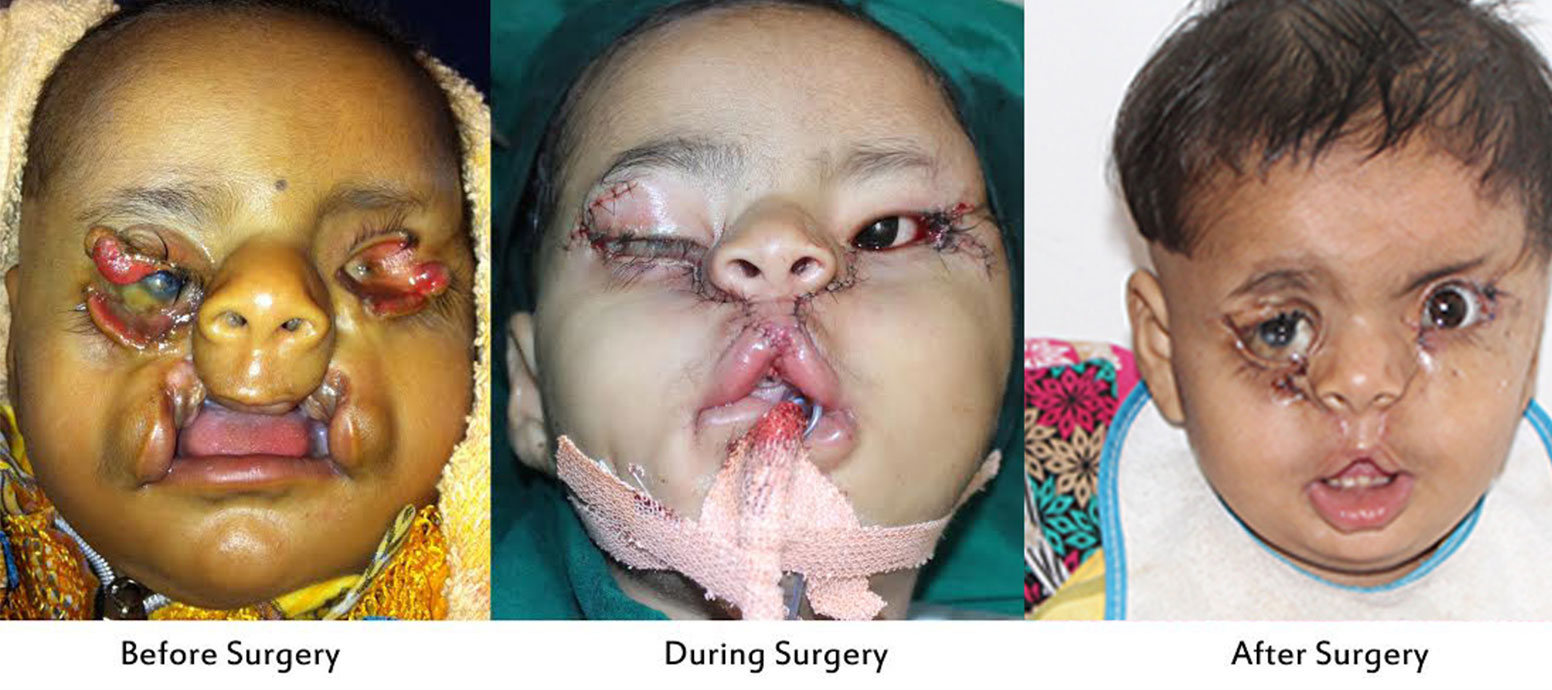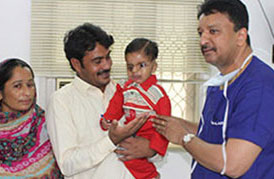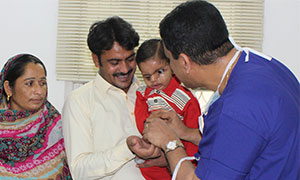
Pakistani boy gets new face after successful facial reconstruction surgery
Recently, an 18-month-old Pakistani toddler from Karachi born with a congenital, bilateral Tessier’s facial Cleft Type 4 with orbital (eye) bone clefts was successfully rehabilitated at Balaji Dental and Craniofacial Hospital.
Non-fusion of facial bones including the bones forming the eye sockets (orbit) results in facial clefts. Of the nearly 20 major types of facial clefts, those involving orbit are often rare (more than 1 in 100,000 live births) and rehabilitations are complex.
Children born with such severe deformities suffer immense difficulties in feeding, breathing, speaking and psychological trauma because of their appearance. Master Noman Arshad was born to Pakistani farmhands, Mr. Arshad Ali and Mrs. Raziya. Their 18 month old son, Master Noman was born with this bilateral Tessier’s facial Cleft Type 4 defect. Mr. Arshad Ali sought the best treatment for his son's defect. His search led him to renowned Dental Surgeon Dr. Asif Arian who is the President of Asia Pacific Dental Federation (APDF) & Former President of Pakistan Dental Association. Being aware of Chennai based Craniofacial Surgeon Dr. S. M. Balaji’s work, Master. Noman was referred to Balaji Dental and Craniofacial Hospital.
It was very tough to bring the Pakistani boy to India. Dr. Balaji took rehabilitation as a challenge at several levels. The defect in itself was complex and it required skill and precision as the challenge was to salvage some vision for the boy. Dr. Balaji evaluated the extent of facial cleft with the help of 3D CT scan. The boy had bilateral cleft lip & palate which was extending to the orbital (eye) floor resulting in a deformed eye and eyelids. The left eye was congenitally absent. There was no vision in the left eye and also the right eye had only 40% vision. Due to the extensive involvement of the eyes in the cleft defect, the nasolacrimal ducts were damaged causing epiphora or continuous tear flow from the eyes. Because of the cleft, the child could not be normally fed nor was there a chance of good speech formation. The central part of cleft was attached to the upper lip.
Dr. Balaji’s plan was to immediately close the lip defect to recreate the mouth to enable the baby to be fed well and to have a reasonable facial profile. In addition, Dr. Balaji’s foremost concern was to save the baby’s vision in the right eye, prosthetically replace the congenitally missing left eye to improve the appearance for social acceptance and to correct the abnormal tear flow. Hence in a 6 hour long surgery, Dr. Balaji closed the bilateral cleft lip. He then recreated the upper eyelids. All extra tissue tags were carefully dissected out. The internal architecture of the eye socket was recreated. In the process, careful surgical handling ensured salvaging of the vision of the right eye. A prosthetic eyeball was fixed in the left eye to closely resemble a normal eye. The abnormal tear flow was corrected with DCR or Dacryocystorhinostomy in which a new direct communication was created by placing a silicone tube to enable the tears to drain into the nose.
With the completion of first step of reconstruction itself, Master Noman now has a more normal appearance and his feeding has improved greatly. The parents are now psychologically strengthened with their baby’s improved facial appearance & health and they are returning to Karachi. This being a unique case of a Pakistani baby successfully receiving facial reconstruction surgery in Chennai, a press meet has been organized. The awareness of availability of corrective methods for such rare facial deformities in Chennai needs to be created.


